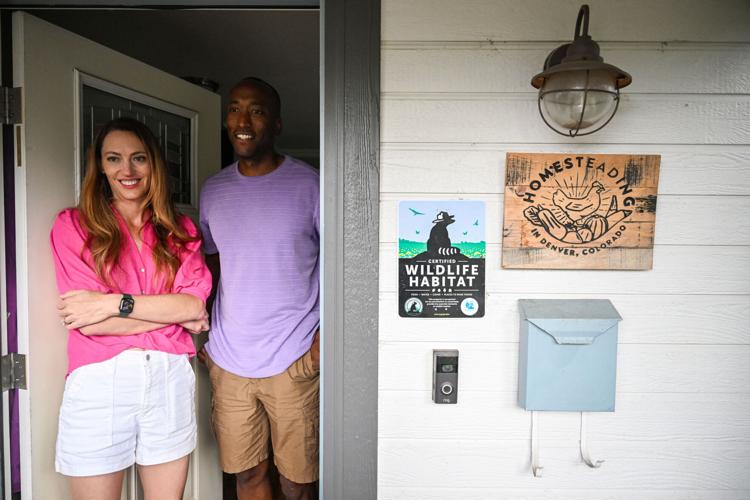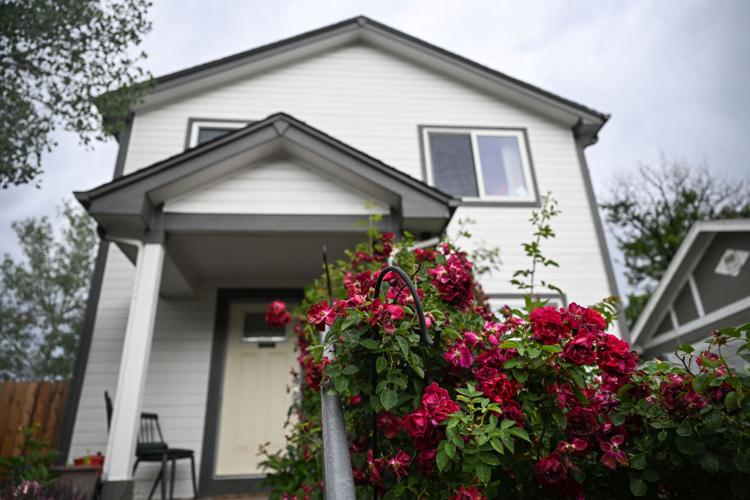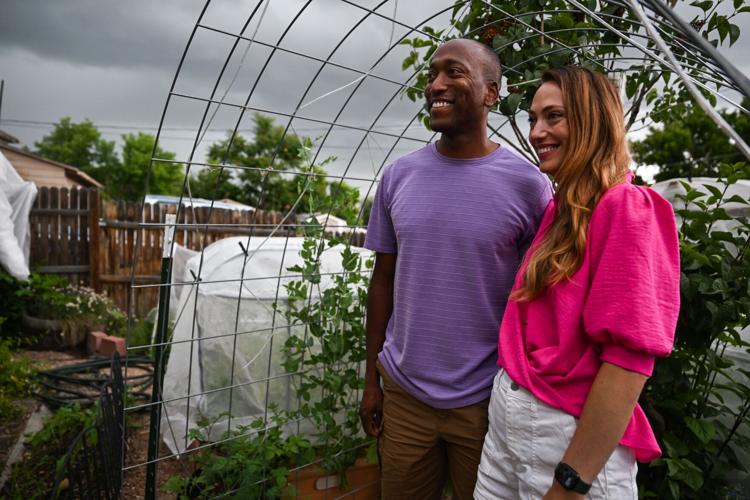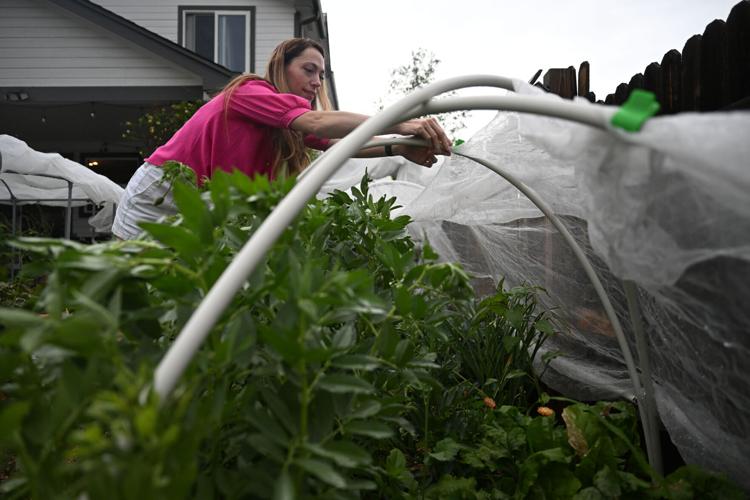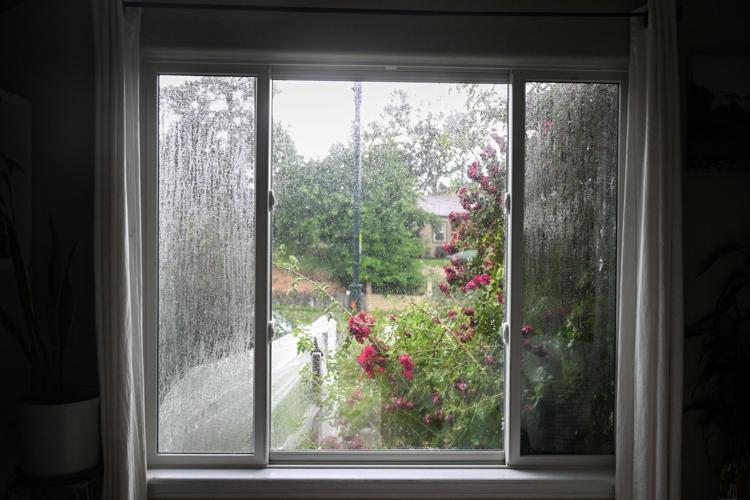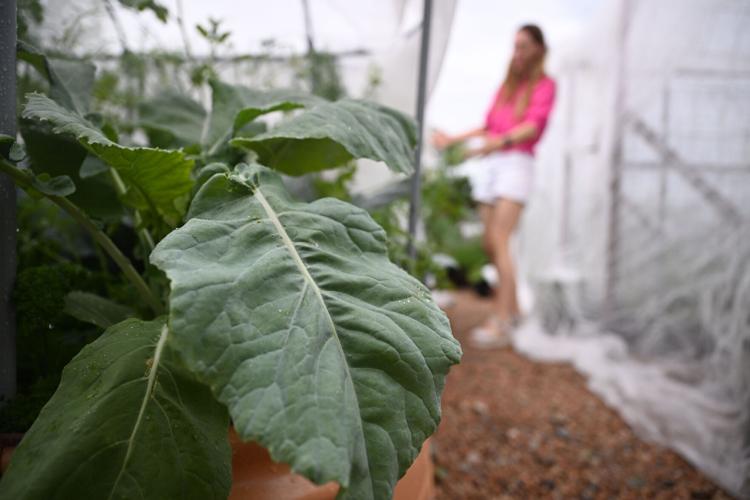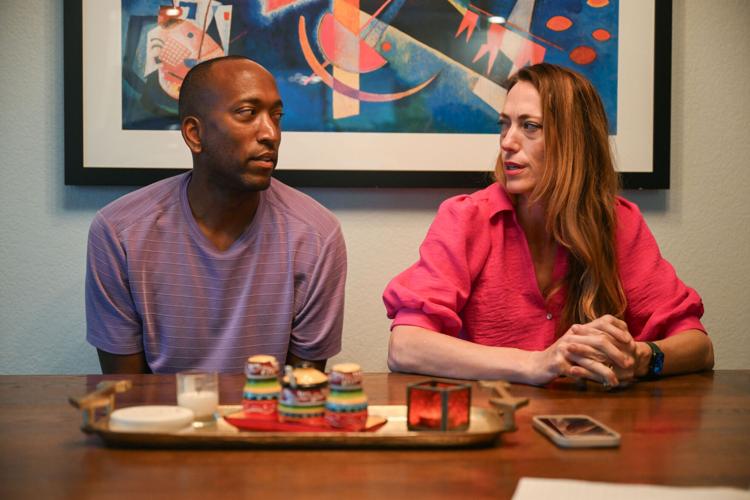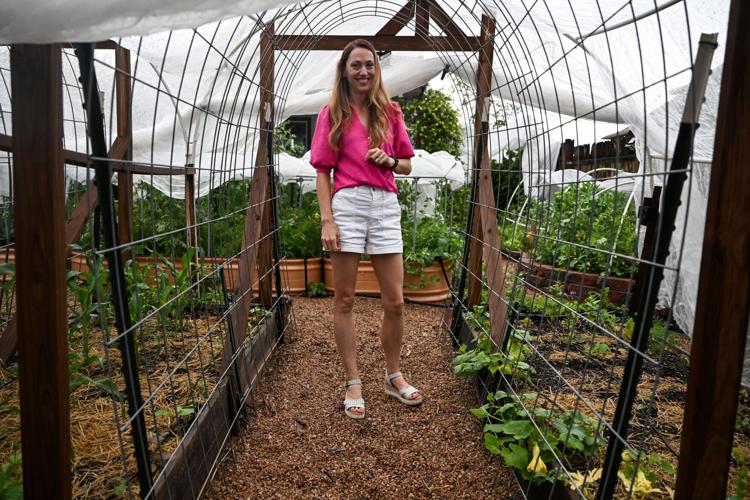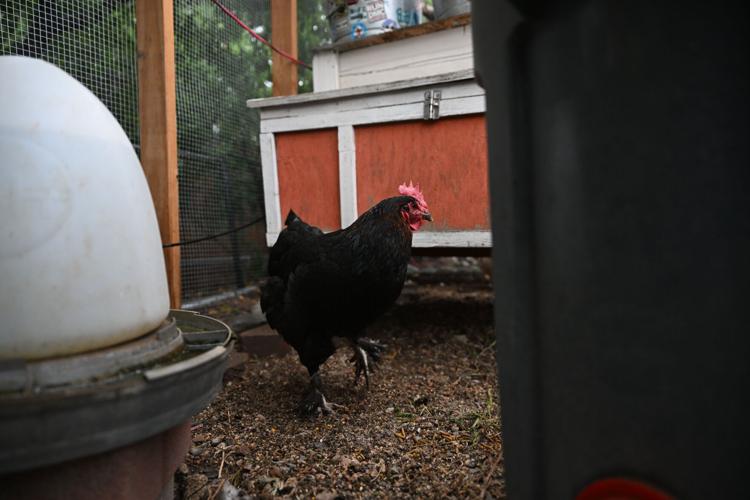‘Returning to the land’: Denver couple share about farming in the city
DENVER • Stepping into the backyard of a cozy home, I’m hit with the perfume of flowers and herbs.
Underneath the sheets protecting the plants from an afternoon hailstorm: a lush, growing garden. As we wade through the plant beds, the homeowners point out ripening berries and a small beehive. Flowering vines grow along standing trellises and fruit trees line the far fence.
Two chickens, Esther and Gretchen, cluck in their coop.
Welcome to the home(stead) of Heather and Terrance Grady. Despite living in the city, this Denver couple has built a plentiful edible garden, complete with ripe produce and egg-laying chickens. With more than 9,000 followers on their TikTok account @HomesteadinginDenver, the pair work to educate others about gardening in the city.
Homesteading in a metropolitan area is a bit different from in the country. With limited space and close neighbors, there are unique challenges to city gardens. But one of the biggest obstacles is getting started, the couple said. It can be overwhelming, not knowing where to start. A piece of advice: Begin with something small and simple, like herbs, Terrance suggested.
“I really just thought it was kind of unapproachable. It always just seemed like magic,” he said.
The couple took their first step in 2017, building one 6-foot-by-18-foot raised brick bed. They planted a handful of fruit trees and berry bushes. Then, when the pandemic kept them at home, they decided to expand their garden by adding nearly a dozen beds scattered throughout the back and front yards, creating the flourishing landscape they have now.
They have just under 50 tomato plants, 50 pepper plants and hundreds of fruit- and vegetable-producing greens. In 2023, the Gradys’ garden became a Certified Wildlife Habitat, providing a diverse ecosystem, important for native pollinators.
While both had always been interested in gardening, they were inspired to know more about the foods they consume. By eating from their own garden, they’re aware of what goes into their produce, choosing not to use pesticides and focusing on natural components.
It also provides a purpose to get outside and enjoy natural space without having to leave home, which was a big draw during the pandemic, Terrance said. And with the high price of food nowadays, it pays to use your garden.
“I think there’s a self-sufficiency component to it as well. The cost of food has gotten so high that I think that kind of interests some people,” Heather said. “There are people truly doing it out of a need. I mean, I think it’s unfortunate but true.”
“I know everything that’s going into this food, and I can create nutrient-dense, delicious food that I’m growing at home, and kind of take that autonomy back in that way,” Terrance added.
The pair decided on using raised garden beds because the backyard’s soil was damaged after being used as a parking lot for decades. The couple relies on vertical gardening techniques to make the most of their space. They also use drip irrigation to minimize their water usage in an effort to stay sustainable.
“We had had a lot of conversations about it, because living in the West, where water is scarce, we were like, ‘We don’t want to put sod back here.’ We really wanted to be intentional about how we use the space,” Heather said.
So, how did they do it? Some YouTube. Some Instagram. And a lot of reading, Heather laughed, adding “We have a whole library of weird books about soil.”
Experience is also a teacher, she said, with trial and error creating lessons over time. It was hard, the two admit.
“Initially, when we didn’t know what we were doing, it was very difficult. It was like another 20- or 30-hour-a-week job on top of our full-time job,” said Heather, who works in health care informatics. Terrance also works a full-time job as a commercial loan officer for the Colorado Housing and Finance Authority, so the two had to learn how to balance careers with the homestead.
It’s easier now with the streamlined systems the two have built over the years. It also helps to have a partner.
“The funny thing about us, it’s truly a partnership,” Heather said. “I needed Terrance in my life to be like, ‘No, we’re gonna set up a system and I’m gonna care about it.’ Because I’m a great project initiator. I am not the follow-through person — that is 100% Terrance. So, we’re lucky that we have opposite qualities that balance each other out.”
Education is a large component of the couple’s garden, teaching other interested gardeners how to get started and maintain their urban farms through social media platforms and their blog, homesteadingindenver.com.
“We’ve learned so much, and I just feel compelled to share that knowledge with other people,” Heather said. “We’re not influencer-type people at all, we both hate attention. We’re both camera shy, so it’s very funny, but we’re both really passionate about sharing information. I think that knowing how to grow food should be free. I don’t think that knowledge should be gatekept.”
The Gradys also share with the community in another way: donating their bounty. Heather recalled the first time they harvested their plants — even after canning, freezing and dehydrating the veggies, there was still excess.
“We were so quickly overwhelmed by how much food we could grow,” Heather said. “It was more food than we could possibly imagine for two people. And so we were like, ‘What do we do with it? We’re not gonna waste it.’ And that led us to look into local hunger relief organizations.”
After some research, the couple found Fresh Food Connect, a nationwide nonprofit that connects local home growers with community food distribution programs to provide fresh produce to those in need. Terrance serves on the nonprofit’s board of directors.
With hundreds of pounds of tomatoes expected to be harvested this year alone by the Gradys, there’s a lot of work to be done. But it’s worth it.
“For me, it’s returning to the land,” Heather said. “It’s coming back to a place of simplicity, where you’re living in line with the planet more sustainably, and creating a little ecosystem. That’s a big part of it for me — it’s not just for us, it’s habitat for pollinators and birds.”





